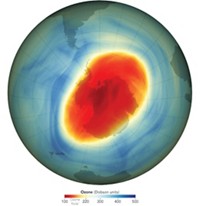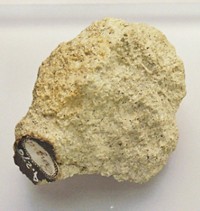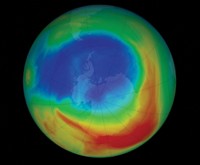Advertisement
Grab your lab coat. Let's get started
Welcome!
Welcome!
Create an account below to get 6 C&EN articles per month, receive newsletters and more - all free.
It seems this is your first time logging in online. Please enter the following information to continue.
As an ACS member you automatically get access to this site. All we need is few more details to create your reading experience.
Not you? Sign in with a different account.
Not you? Sign in with a different account.
ERROR 1
ERROR 1
ERROR 2
ERROR 2
ERROR 2
ERROR 2
ERROR 2
Password and Confirm password must match.
If you have an ACS member number, please enter it here so we can link this account to your membership. (optional)
ERROR 2
ACS values your privacy. By submitting your information, you are gaining access to C&EN and subscribing to our weekly newsletter. We use the information you provide to make your reading experience better, and we will never sell your data to third party members.
Environment
Eruptions Can Damage Ozone Layer
Analysis of ancient Nicaraguan volcanic activity shows bromine and chlorine releases were large enough to deplete ozone
by Elizabeth K. Wilson
June 18, 2012
| A version of this story appeared in
Volume 90, Issue 25
Volcanic eruptions in Nicaragua during the past 70,000 years injected enough bromine and chlorine into the stratosphere to potentially damage Earth’s ozone layer, scientists reported on June 12 at the American Geophysical Union’s Chapman Conference on Volcanism & the Atmosphere, in Selfoss, Iceland. Scientists have known that such explosive eruptions can transport these gases into the stratosphere. But this work, from Kirstin Krüger at GEOMAR Helmholtz Centre for Ocean Research Kiel, in Germany, and colleagues, is the first to show that the gases were emitted in quantities sufficient to deplete the ozone layer. The scientists analyzed minerals associated with 14 ancient Nicaraguan eruptions and estimated that stratospheric bromine and chlorine concentrations after the eruptions could have been 200 to 300% greater than 2011 concentrations. On the basis of a conservative estimate that 10% of emitted gases reached the stratosphere, 120 million metric tons of chlorine and 600,000 metric tons of bromine were released into the stratosphere by an eruption 24,500 years ago at the Apoyo Caldera. Just how much damage these eruptions caused to the ozone layer still needs to be determined, as does how much damage future eruptions could cause.





Join the conversation
Contact the reporter
Submit a Letter to the Editor for publication
Engage with us on Twitter